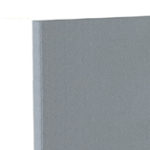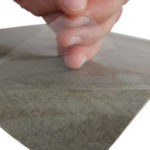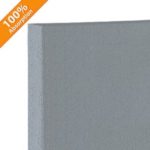
Soundproof rooms are useful for leisure and professional applications. Whether you are building a music studio or you work for a broadcasting company, you must control the sounds coming in and out of a space to record without interruption. Plus, there’s a chance you’ll spend hours at a time in your new soundproof room — so incorporating air vents is important for safety and comfort.
Your soundproof room should be closed off when tracking, so there are a few modifications you can perform across your HVAC system to limit echos, slap back and unwanted reverberations.
The Importance of Quiet Ventilation in a Soundproof Room
If you want ductwork in your soundproof room, you’ll need at least a 6-inch hole in the wall. Untreated metal ducts, intakes and exit vents create an environment where you can hear your HVAC system’s air handler during operation. DIY builders and professionals will notice excess rumbling as the system pushes air from point A to point B, so building a sound-absorbing chamber is a cost-effective way to reduce noise transmission.
Materials Needed to Ventilate a Sealed Room
If you’re building a soundproof room with ventilation, you’ll need the following materials:
- Plywood sheets (half-inch thick)
- Flexible conduit
- Acoustic foam
- Screwdriver
- Wood saw
- Wood glue
- Tape measure
Building a Sound Maze in Soundproof Room With Ventilation
Closing off HVAC system ducts in a soundproof room makes the room feel stuffy. The most common way to treat your existing setup so that you gain access to hot and cool air is to build a sound maze near the air handler. The goal of this project is to incorporate soundproofing materials within your ventilation system so sound waves are reduced by the time air enters the room.
Be sure to gather the dimensions of your HVAC system vents before construction. As sound waves bounce off obstacles within the absorption chamber, you get an uninterrupted flow of air free from noisy distractions.
Steps to Construct a Sound Maze
- Remove the applicable air vent covers.
- Gather the interior duct dimensions.
- Cut four or more pieces of plywood to fit inside the duct. You’ll use these pieces to make maze walls.
- Saw off room for the updated conduit to pass by the plywood on the right or left sides (depending on your setup).
- Apply wood glue to both sides of each maze wall.
- Attach your choice of acoustic foam to the four panels.
- Glue the foam-covered panels in an alternating fashion within the vent. The conduit will run in an S-shape.
- Feed your existing or updated conduit through the maze.
- Reattach air vent covers, and the project is complete.
Materials for Soundproofing Rooms With Ventilation
HVAC systems distribute hot and cold air, so make sure you only install foam treatments that are fire safe. If you’re searching for melamine foams, Soundproof Cow specializes in sound reduction solutions for projects large and small.
Our melamine foams consist of flame-resistant fabrics. Choose from multiple thicknesses and benefit from installation timelines that take minutes to complete. Most of our Udderly Quiet® products combat bacteria, moisture and mold, which helps to keep your friends, family and employees safe from airborne contaminants.
Take your soundproofing project a step further by covering ductwork in our Vibra Block® sound deadening material. Simply peel and stick sheets of this dampening material to reduce vibrations that normally move through steel.
Purchase Soundproofing Solutions at Soundproof Cow
Soundproof Cow connects acoustic engineers and DIY enthusiasts to affordable sound reduction products. We’re not happy until you’re 100% satisfied with your purchase, so contact us online if you have questions about our soundproofing materials!










